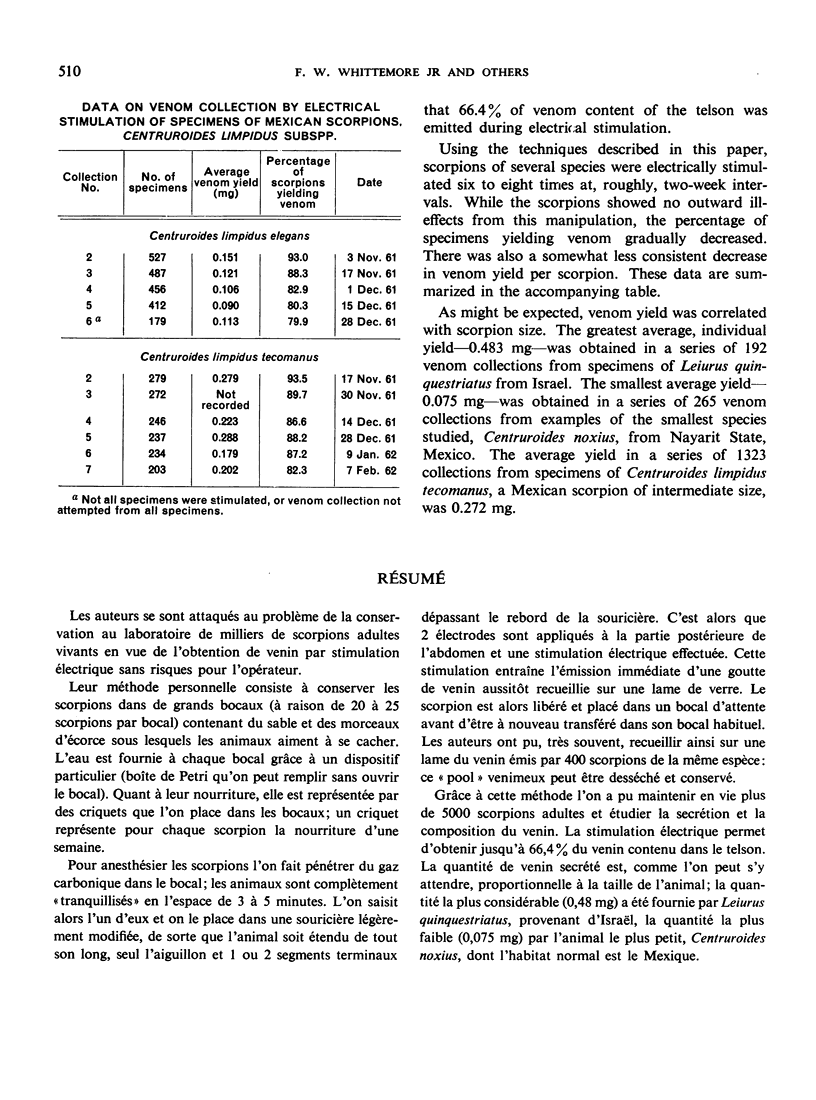Abstract
This paper describes methods used successfully in a large-scale programme for the collection of scorpion venom. Effective methods were developed for the maintenance of a laboratory colony of over 5000 adult scorpions. Electrical stimulation of the scorpions to induce venom emission was greatly facilitated by tranquillizing them with CO2 and using a slightly modified, snap-type mousetrap as a scorpion-holding device. This technique made for rapid handling of specimens with little risk to the technicians and minimal trauma to the scorpions. Specimens held under proper conditions yielded venom from six to eight times at two-week intervals. As much as 66.4% of the venom content of the telson was emitted by an electrically stimulated scorpion. Venom collected in this manner was air-dried at room temperature, then placed in a calcium chloride desiccator and stored at 44° F (6.6° C). Venoms of medically important scorpions from Mexico, Brazil, Israel, India, Panama and the USA were collected during this programme.
Full text
PDF






Images in this article
Selected References
These references are in PubMed. This may not be the complete list of references from this article.
- BUCHERL W. Escorpiões e escorpionismo no Brasil. I. Manutencão dos escorpiões em viveiros e extraço do veneno. Mem Inst Butantan. 1953;25(1):53–82. [PubMed] [Google Scholar]
- WHITTEMORE F. W., Jr, KEEGAN H. L., BOROWITZ J. L. Studies of scorpion antivenins. 1. Paraspecificity. Bull World Health Organ. 1961;25:185–188. [PMC free article] [PubMed] [Google Scholar]










